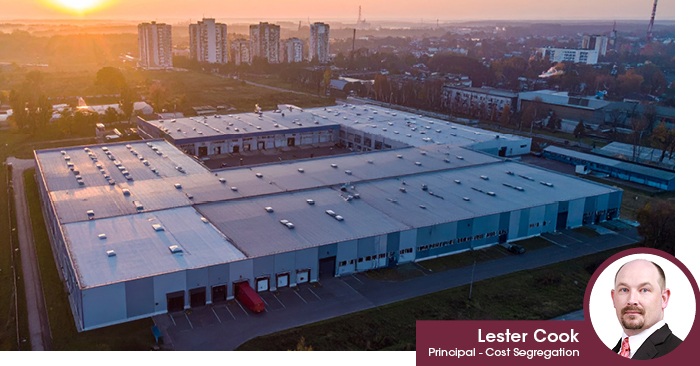Follow KBKG on Social Media
By Lester Cook | Principal, Cost Segregation
The 2025 One Big Beautiful Bill Act (OBBBA) introduced a significant opportunity for domestic manufacturers with the creation of Qualified Production Property (QPP) under new IRC §168(n). This new category allows eligible taxpayers to fully expense certain real estate investments through 100% Bonus Depreciation, which was previously reserved for tangible personal property and land improvements.
KBKG Insight:
To optimize this provision, a detailed Cost Segregation study must be completed to validate the spend on “qualified production property” utilized in a “qualified production activity.”
While the opportunity is compelling, it’s also evolving. Regulations are still needed, and taxpayers must proceed with planning under the assumption that further IRS guidance is forthcoming.
What is Qualified Production Property?
Qualified Production Property (QPP) is a newly defined class of real property that bridges the gap between manufacturing incentives and real estate investment. To qualify, the property must be:
- Nonresidential real property
- Used by the taxpayer as an integral part of a Qualified Production Activity (QPA)
- Located in the U.S. or its territories
- Originally used by the taxpayer, or meet specific exceptions for unused acquired property outlined below
- Constructed between Jan. 20, 2025, and Dec. 31, 2028
- Placed in service before Jan. 1, 2031
Unlike traditional property classes eligible for Bonus Depreciation, QPP includes Section 1250 real property directly used in production, such as the production floor, mezzanines, or lighting systems tied to the process.
KBKG Insight:
Many taxpayers utilize a business structure that holds the real estate in a separate holding company from the operating company of the business. The statement within the provision, “used by the taxpayer,” leaves some ambiguity as to whether a taxpayer utilizing this structure could take advantage of the immediate expensing of qualified production property.
Important Note on Acquired Property
For previously owned property to qualify as QPP, it must not have been used in a qualified production activity by any person between January 1, 2021, and May 12, 2025, and must also never have been used by the acquiring taxpayer. This enables underutilized or vacant industrial properties to be repositioned for production use and still qualify.
KBKG Insight:
This is an excellent opportunity to acquire and rehabilitate vacant manufacturing or warehouse buildings. In this scenario, a portion of the acquired warehouse as well as the improvements may be QPP.
What is a Qualified Production Activity?
A Qualified Production Activity (QPA) involves manufacturing, producing, or refining tangible personal property and must result in a “substantial transformation.”
KBKG Insight:
The IRS has not yet issued regulations to define what constitutes a “substantial transformation” or clarify how QPP elections will be made. These rules are expected to follow the structure of IRC §168(k), but may evolve with formal guidance.
Examples of Substantial Transformation (per IRC §954(d) and Treas. Reg. §1.954-3):
- Converting wood pulp into paper
- Machining steel rods into bolts
- Molding plastic pellets into auto parts
The term “production” is further defined to include only agricultural and chemical production, and a “product” must be tangible personal property, not food or beverages prepared in the same building as a retail establishment in which the property is sold.
KBKG Insight:
Food and beverage manufacturing facilities are a great opportunity, but a restaurant does not meet the QPP definition.
How to Claim Qualified Production Property
To claim 100% Bonus Depreciation on QPP a Taxpayer must make an irrevocable election to do so. A taxpayer may elect Bonus Depreciation for qualified production property by identifying the qualified production property or the portion of property subject to the election on the taxpayer’s tax return for the year of the election. The exact manner for making the election will be provided by the IRS. State conformity is also unknown currently.
KBKG Insight:
Guidance is still required to determine how these allocations should occur. For example, saying 30% of the building footprint is production area. Is that sufficient, or must a taxpayer get more granular and exclude individual items like drywall, wiring, or flooring not in use by QPA?
Conclusion
QPP presents a groundbreaking opportunity aligned with the administration’s commitment to stimulate U.S. manufacturing and drive downstream real estate growth. Acting early ensures you’re positioned to fully leverage the benefits. KBKG is here to support taxpayers and their preparers with expert guidance on eligibility, strategic planning, and compliance. Contact a KBKG expert today to learn more about how to qualify.
About the Author
Lester Cook | Principal – Cost Segregation
Lester Cook has over 25 years of experience in the tax specialty service industry. He is a Principal of KBKG’s Fixed Asset Review Practice. He is a certified member of the American Society of Cost Segregation professionals, a group that he has been a part of since 2008. Throughout his career, Cook has completed… Read More



